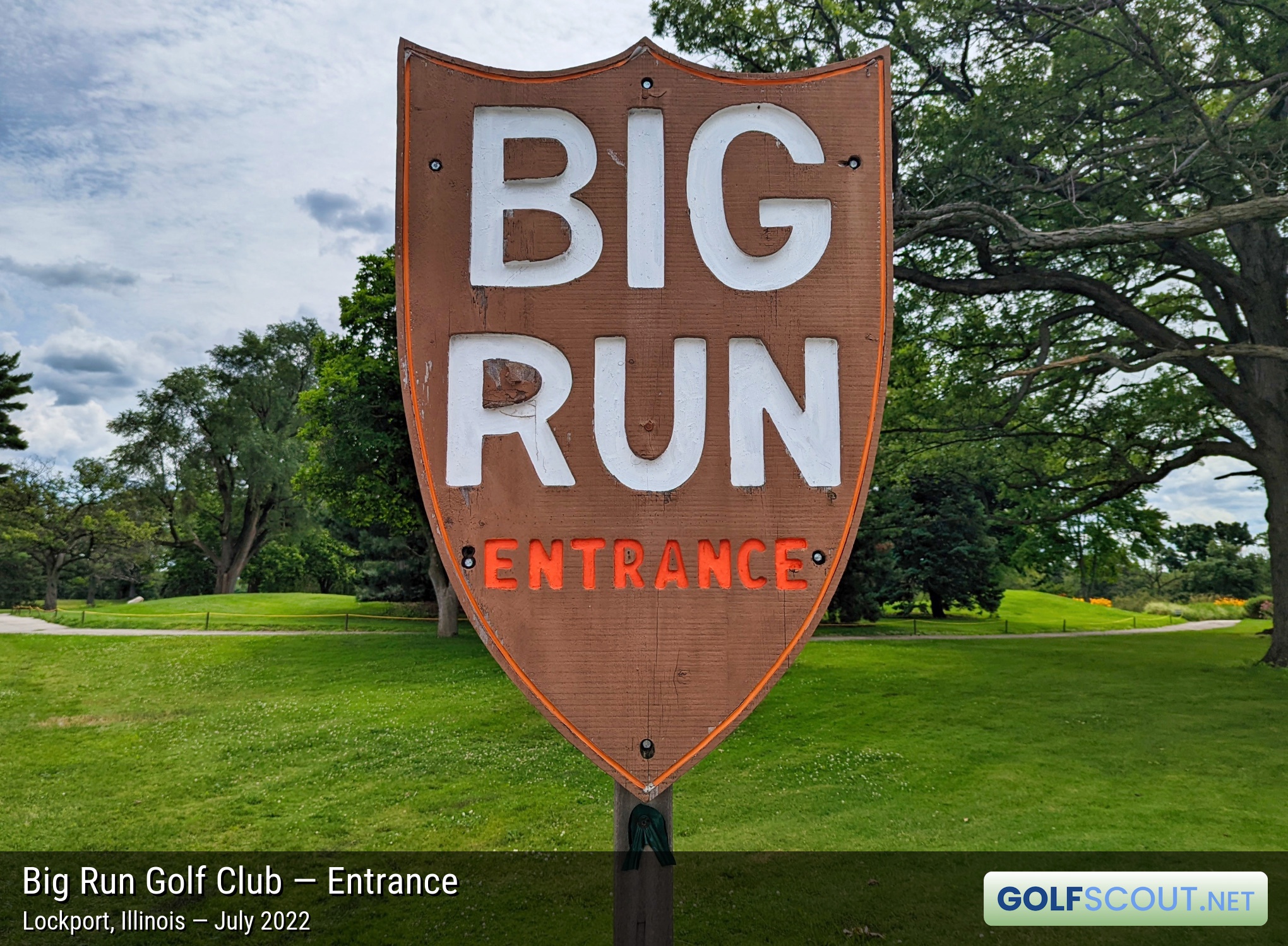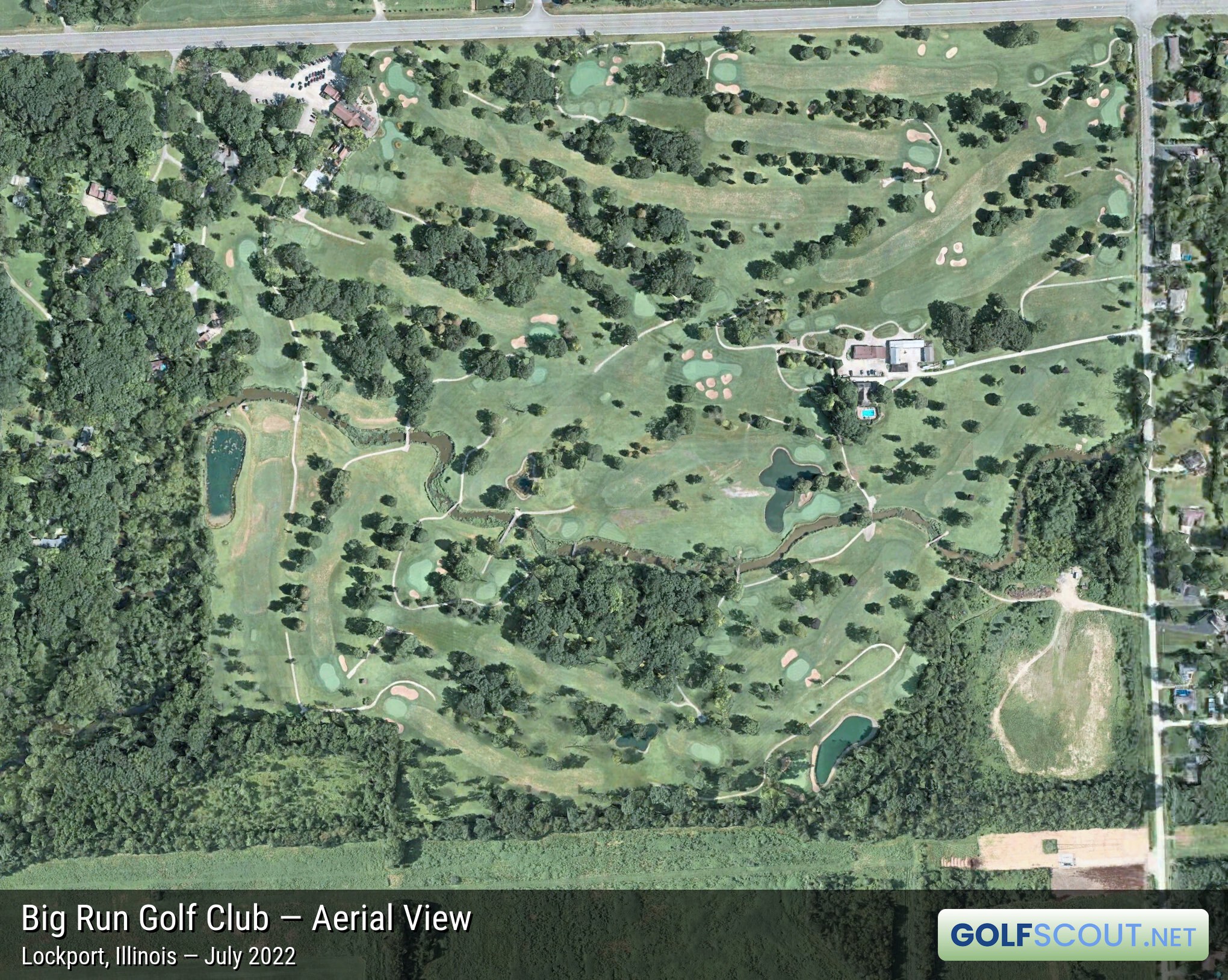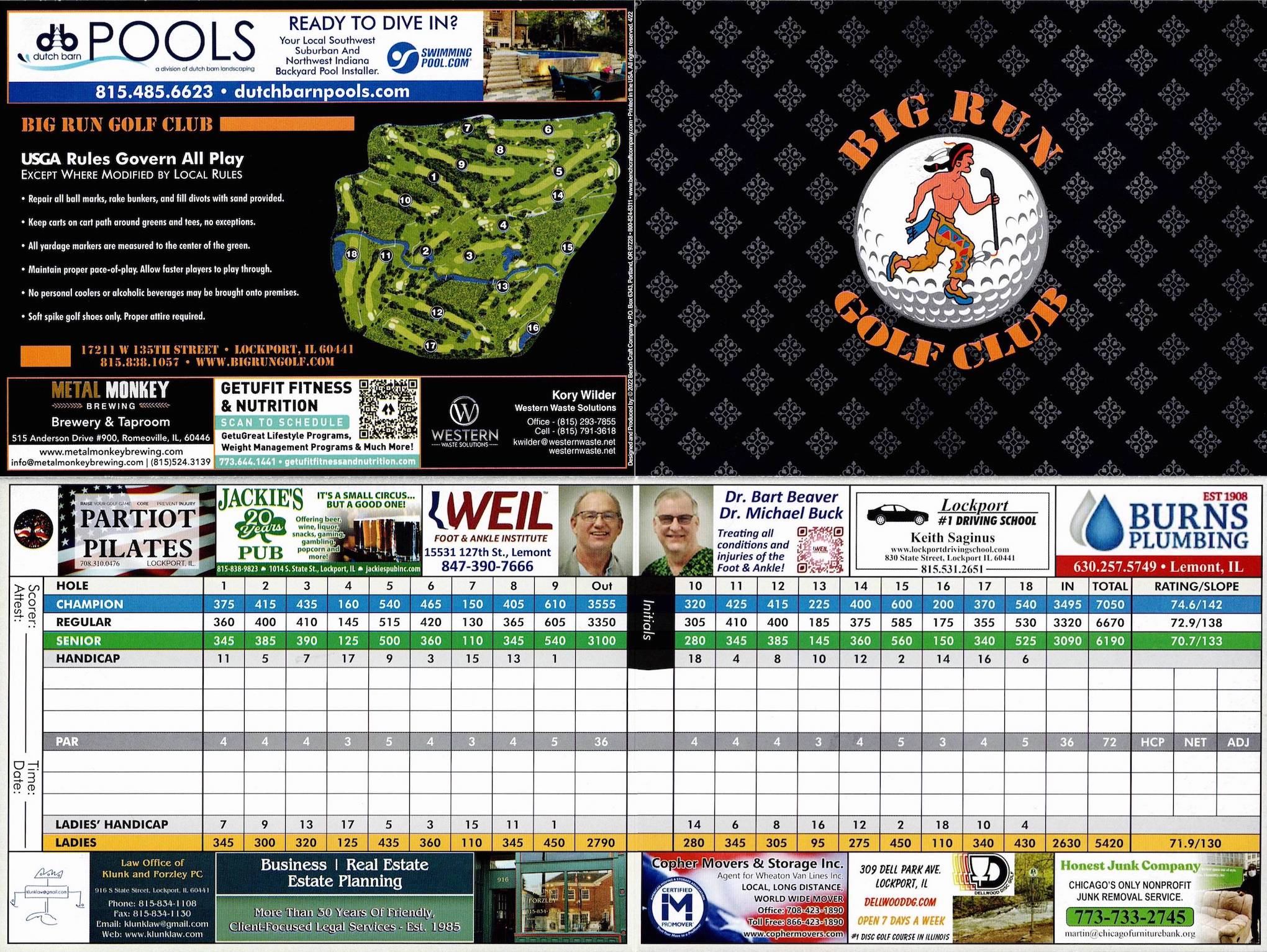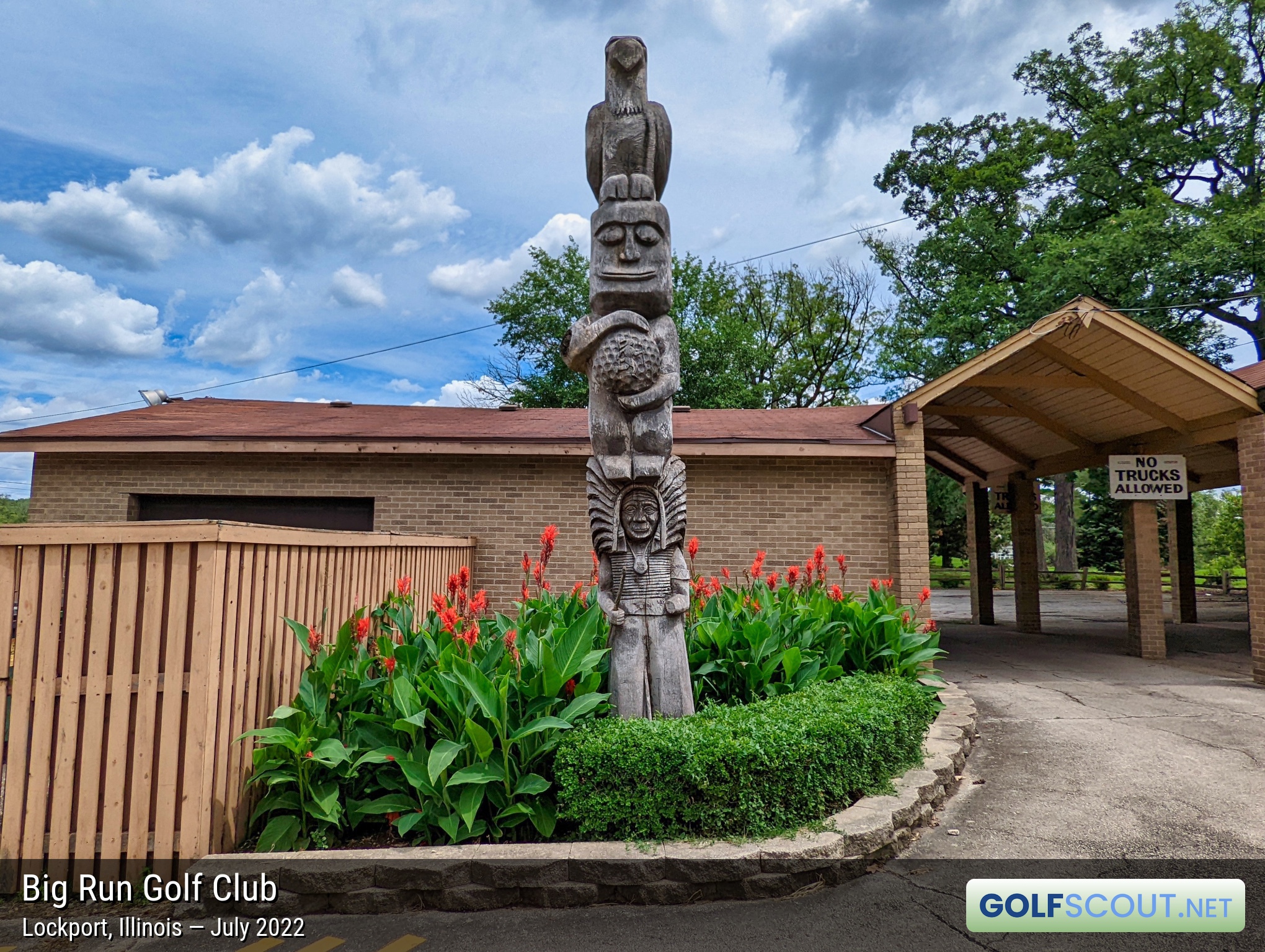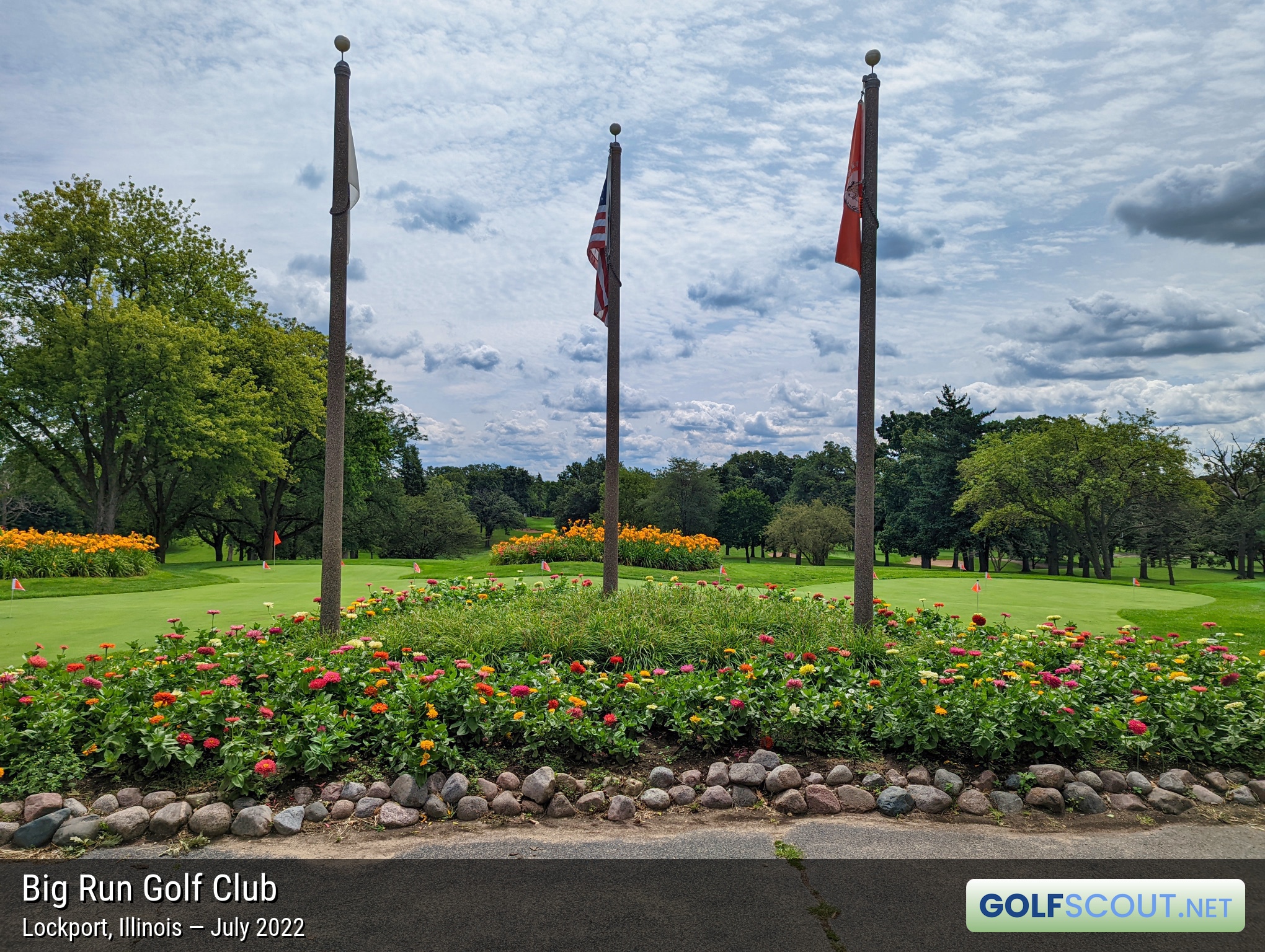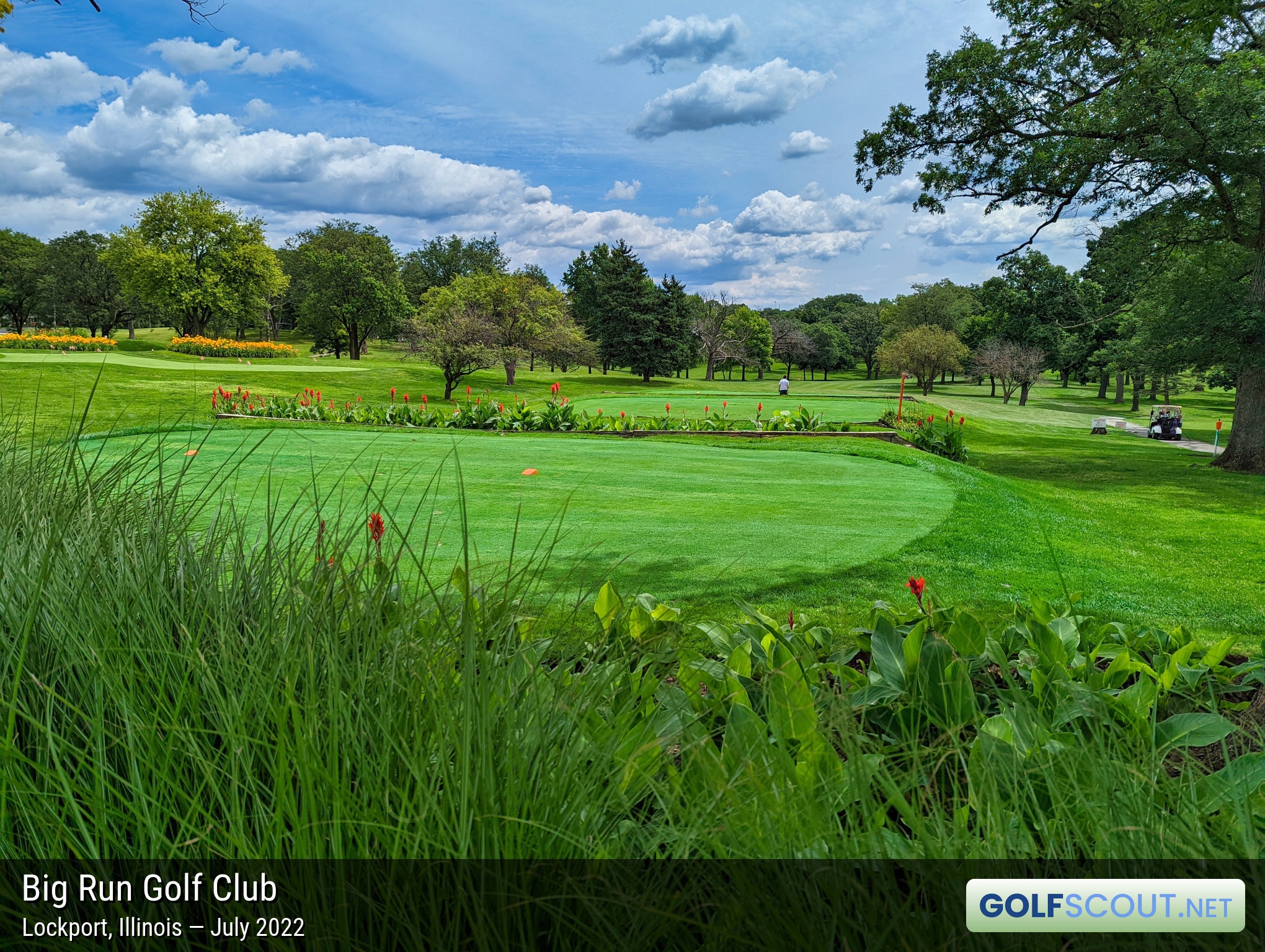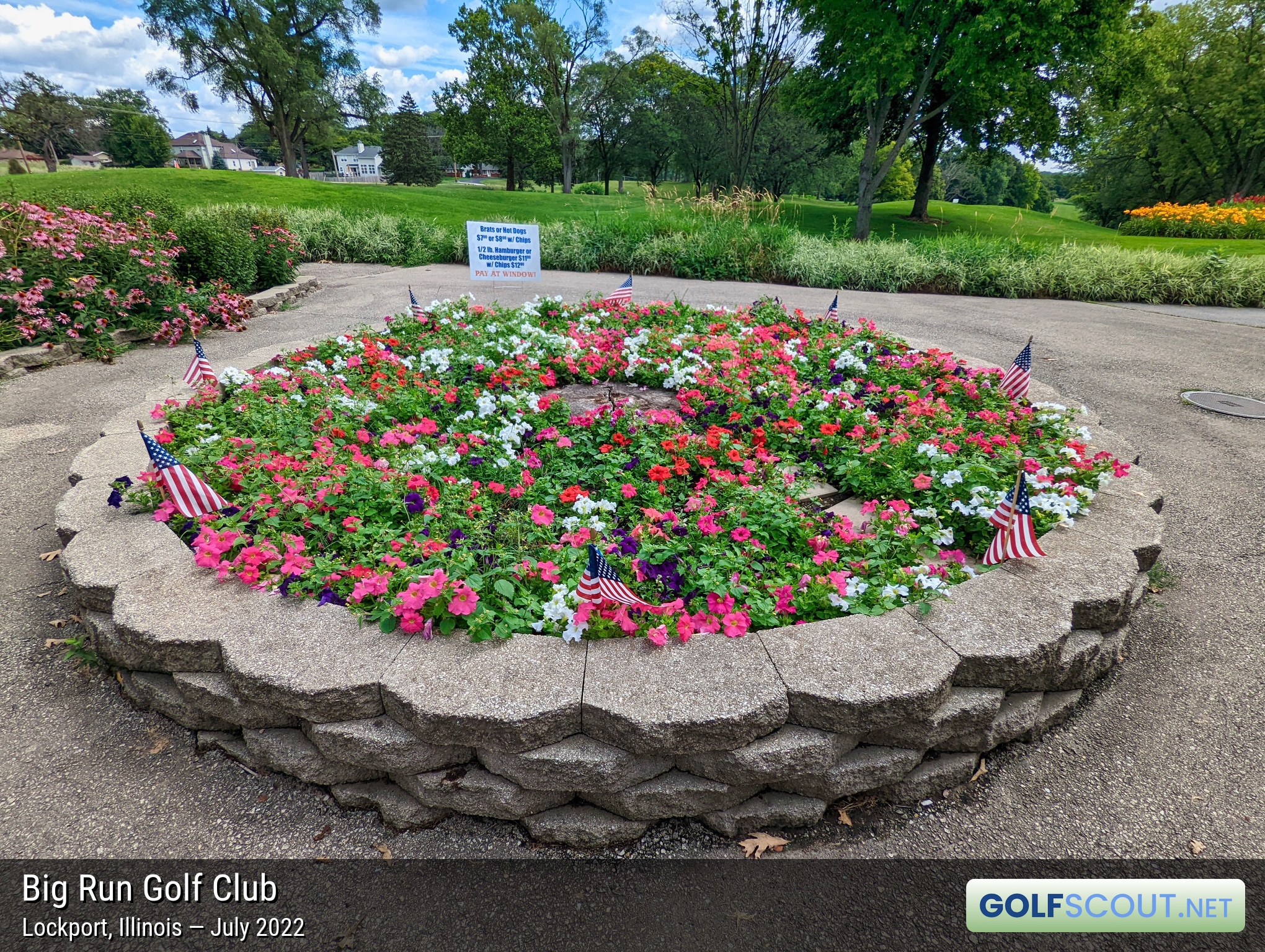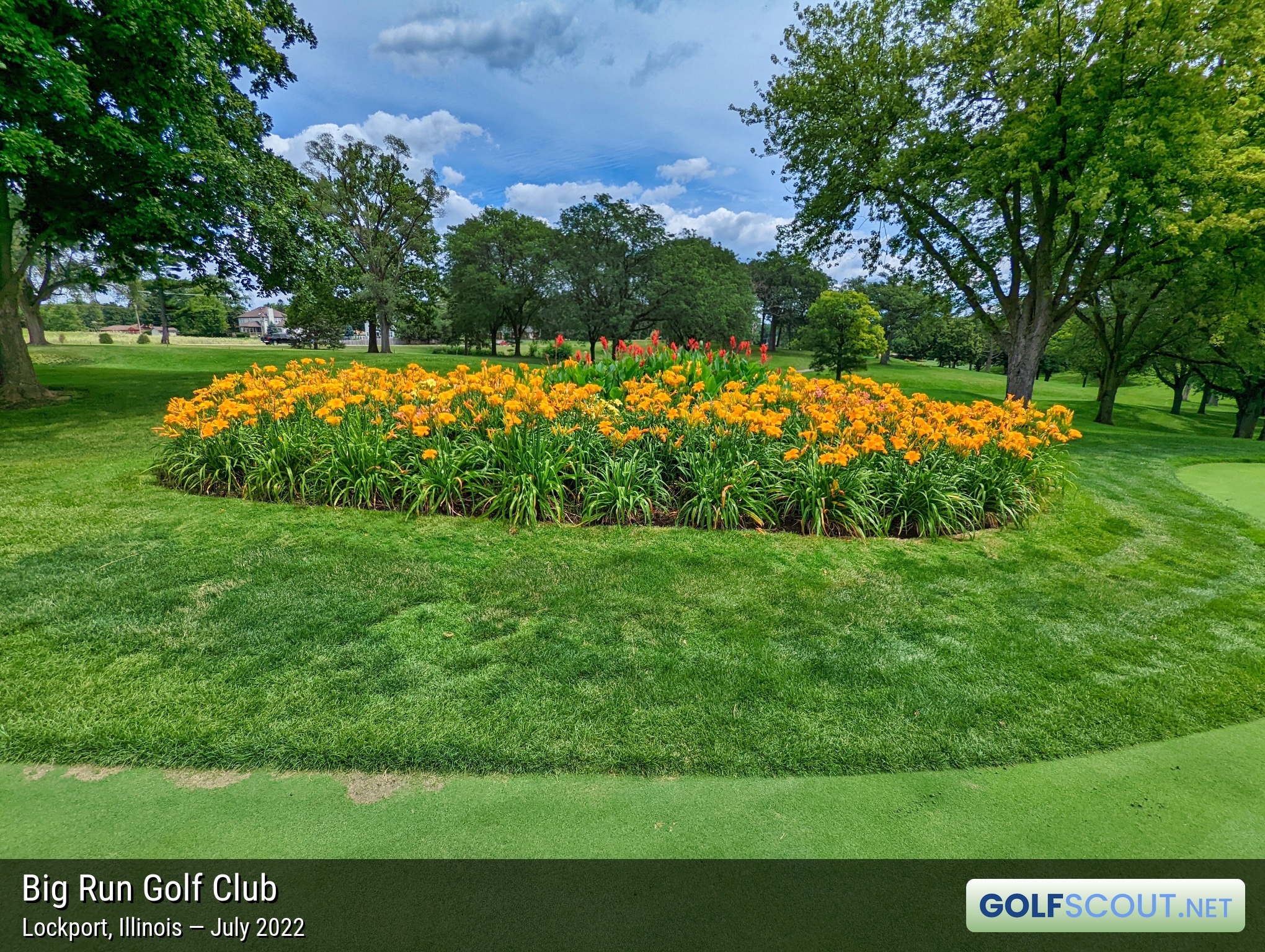Big Run Golf Club
Lockport, Illinois
| Course Type | Public - 18 holes | |
| ’25 Max Green Fee | $75 (cart included) | |
| Par & Tees | 72 (36/36) - 4 tees | |
| Course Length | 7050 yards | |
| Longest Hole | 610 yards | |
| Rating & Slope | 74.6/142 (M) | |
| Driving Range | None | |
| Year Built | 1930 | |
| Tee Time Spacing | 10 minutes 🙂 New! |
Big Run Golf Club Overview
Updated June 9, 2025
Big Run Golf Club in Lockport, Illinois, doesn’t try to dazzle you when you arrive, and that’s part of the charm. A modest parking lot and some understated signage are your first impressions. But once you step onto the course, it's clear you’re in for something far more intense. There's truth in advertising at Big Run; this course is long if you want to play it that way. Plus, this is one of the hilliest tracks in the entire Chicagoland area (perhaps the hilliest), with dramatic elevation changes that shape nearly every shot. Two par-5s stretch over 600 yards, and the full layout from the back tees hits 7,050 yards with a course rating of 74.6 and a slope of 142. It’s quietly tied for the 11th hardest course in Chicagoland, right up there with Thunderhawk, Seven Bridges, and Foxford Hills in terms of challenge.
Originally opened in 1930, Big Run was designed by C.H. Muelenford and legendary golfer Sam Snead, then reworked in the 1980s by Dick Nugent and Ken Killian. Much of the original character remains intact. That’s true for the clubhouse too, for better or worse. Inside, it feels like a walk back in time, with ubiquitous wood paneling, wall-to-wall carpet, and a large, old-school restaurant space anchoring the building. The pro shop is smallish but efficiently stocked, and there’s a large locker room tucked away downstairs. A single practice green sits near the clubhouse, but there’s no driving range, which is unfortunate for a layout this tough -- but nearby options like Old Oak and Cog Hill can cover that need.
The course itself is a true test: full of blind shots and subtle traps for the uninitiated. Knowledge of the layout really helps, especially on signature holes like No. 9 -- a 610-yard monster with uphill and downhill movement before finishing on a multi-tiered green. The par-5s here aren’t opportunities; they’re battles, ranked as the 1st, 2nd, 6th, and 9th hardest holes on the card. Even the par-3s offer little relief, with two stretching over 200 yards from the tips. It’s not a course for players who rely on seeing everything in front of them.
Course conditioning does show its age, with some worn areas, less-than-immaculate greens, and bunkers that could use attention. Five ponds and Long Run Creek add additional natural difficulty, as if it needed more. Given the hills, it's a tough walk, too, especially on a hot day, so carts are the norm and included with green fee. Tee times are spaced at a reasonable 10-minute interval, helping even out pace of play.
Strangely, Big Run is now owned by CITGO, which acquired it in 2024 as part of a greenbelt expansion around its Lemont refinery nearby to the northwest. What that means for the future of the course remains uncertain. One curious feature that hasn’t changed is the heavy use of Native American imagery -- the venue logo, the giant totem pole at the clubhouse, and scattered decor raise questions that the facility doesn’t directly address. Obviously, various tribes occupied this land long before golf existed, but I’d love to know more about this specific history. That aside, Big Run remains one of the most physically demanding and mentally exhausting rounds in the area -- an old-school test that pulls no punches.
Updated June 9, 2025
Big Run Golf Club in Lockport, Illinois, doesn’t try to dazzle you when you arrive, and that’s part of the charm. A modest parking lot and some understated signage are your first impressions. But once you step onto the course, it's clear you’re in for something far more intense. There's truth in advertising at Big Run; this course is long if you want to play it that way. Plus, this is one of the hilliest tracks in the entire Chicagoland area (perhaps the hilliest), with dramatic elevation changes that shape nearly every shot. Two par-5s stretch over 600 yards, and the full layout from the back tees hits 7,050 yards with a course rating of 74.6 and a slope of 142. It’s quietly tied for the 11th hardest course in Chicagoland, right up there with Thunderhawk, Seven Bridges, and Foxford Hills in terms of challenge.
Originally opened in 1930, Big Run was designed by C.H. Muelenford and legendary golfer Sam Snead, then reworked in the 1980s by Dick Nugent and Ken Killian. Much of the original character remains intact. That’s true for the clubhouse too, for better or worse. Inside, it feels like a walk back in time, with ubiquitous wood paneling, wall-to-wall carpet, and a large, old-school restaurant space anchoring the building. The pro shop is smallish but efficiently stocked, and there’s a large locker room tucked away downstairs. A single practice green sits near the clubhouse, but there’s no driving range, which is unfortunate for a layout this tough -- but nearby options like Old Oak and Cog Hill can cover that need.
The course itself is a true test: full of blind shots and subtle traps for the uninitiated. Knowledge of the layout really helps, especially on signature holes like No. 9 -- a 610-yard monster with uphill and downhill movement before finishing on a multi-tiered green. The par-5s here aren’t opportunities; they’re battles, ranked as the 1st, 2nd, 6th, and 9th hardest holes on the card. Even the par-3s offer little relief, with two stretching over 200 yards from the tips. It’s not a course for players who rely on seeing everything in front of them.
Course conditioning does show its age, with some worn areas, less-than-immaculate greens, and bunkers that could use attention. Five ponds and Long Run Creek add additional natural difficulty, as if it needed more. Given the hills, it's a tough walk, too, especially on a hot day, so carts are the norm and included with green fee. Tee times are spaced at a reasonable 10-minute interval, helping even out pace of play.
Strangely, Big Run is now owned by CITGO, which acquired it in 2024 as part of a greenbelt expansion around its Lemont refinery nearby to the northwest. What that means for the future of the course remains uncertain. One curious feature that hasn’t changed is the heavy use of Native American imagery -- the venue logo, the giant totem pole at the clubhouse, and scattered decor raise questions that the facility doesn’t directly address. Obviously, various tribes occupied this land long before golf existed, but I’d love to know more about this specific history. That aside, Big Run remains one of the most physically demanding and mentally exhausting rounds in the area -- an old-school test that pulls no punches.
Big Run Golf Club Map & Aerial Imagery
News about Big Run Golf Club
New feature!Other Photos from Big Run Golf Club
Anetsberger Golf Course
Apple Orchard Golf Course
Arboretum Club
Arlington Lakes Golf Club
Arrowhead East Course
Arrowhead South Course
Arrowhead West Course
Balmoral Woods Golf Club
Bartlett Hills Golf Club
Belmont Golf Club
Big Run Golf Club
Billy Caldwell Golf Course
Bittersweet Golf Club
Blackberry Oaks Golf Course
Blackstone Golf Club
Bliss Creek Golf Course
Bloomingdale Golf Club
Bolingbrook Golf Club
Bonnie Brook Golf Course
Bonnie Dundee Golf Club
Boone Creek Golf Club - Creekside Course
Boone Creek Golf Club - Prairie Course
Boone Creek Golf Club - Valley Course
Boughton Ridge Golf Course
Bowes Creek Country Club
Brae Loch Golf Club
Bridges of Poplar Creek Country Club
Broken Arrow Golf Club - East Course
Broken Arrow Golf Club - North Course
Broken Arrow Golf Club - South Course
Buffalo Grove Golf Course
Burnham Woods Golf Course
Calumet Country Club
Canal Shores Golf Course
Cantigny Hillside Course
Cantigny Lakeside Course
Cantigny Woodside Course
Cardinal Creek Golf Club - Center Course
Cardinal Creek Golf Club - North Course
Cardinal Creek Golf Club - South Course
Carriage Greens Country Club
Cary Country Club
Centennial Park Golf Course
Chalet Hills Golf Club
Chapel Hill Country Club
Chevy Chase Country Club
Chicago Heights East Golf Course
Chicago Heights West Golf Course
Chick Evans Golf Course
Cog Hill Course #1
Cog Hill Course #2 - Ravines
Cog Hill Course #3
Cog Hill Course #4 - Dubsdread
Columbus Park Golf Course
Countryside Prairie Course
Countryside Traditional Course
Coyote Run Golf Course
Craig Woods Golf Club
Crane's Landing Golf Club
Crystal Woods Golf Club
Deer Creek Golf Club
Deerfield Golf Club & Learning Center
Deerpath Golf Course
Eaglewood Resort Golf Club
Edgebrook Golf Course
Flagg Creek Golf Course
Foss Park Golf Course
Fountain Hills Golf Club
Fox Bend Golf Course
Fox Lake Country Club
Fox Run Golf Links
Foxford Hills Golf Club
Fresh Meadow Golf Club (Closed)
George W. Dunne National
Glencoe Golf Club
Glendale Lakes Golf Club
Glenview Park Golf Club
Glenview Prairie Club
Glenwoodie Golf Club
Golf Center Des Plaines
Golf Club of Illinois
Golf Vista Estates Golf Course
Grayslake Golf Course
Green Garden Blue Course
Green Garden Gold Course
Green Garden Links Course
Green Meadows Golf Course
Greenshire Golf Course
Harborside International - Port Course
Harborside International - Starboard Course
HeatherRidge Golf Course
Heritage Oaks Golf Club - Classic 18
Hickory Hills Country Club
Hickory Knoll Golf Course
Highland Woods Golf Course
Highlands of Elgin Golf Course
Hilldale Golf Club
Hughes Creek Golf Club
Indian Boundary Golf Course
Inwood Golf Course
Jackson Park Golf Course
Joe Louis “The Champ” Golf Course
Klein Creek Golf Club
Lake Bluff Golf Club
Lake Park Golf Course
Lincoln Oaks Golf Course
Links at Carillon - Blue Course
Links at Carillon - Red Course
Links at Carillon - White Course
Lombard Golf Course
Lost Marsh Golf Course
Makray Memorial Golf Club
Maple Meadows Golf Course
Marengo Ridge Golf Club
Marquette Park Golf Course
Meadowlark Golf Course
Meadows Golf Club of Blue Island
Midlane Country Club
Mill Creek Golf Club
Mistwood Golf Club
Mt. Prospect Golf Club
Naperbrook Golf Course
Nickol Knoll Golf Club
Oak Brook Golf Club
Oak Grove Golf Course
Oak Hills Country Club
Odyssey Golf Foundation
Old Oak Country Club
Old Orchard Country Club
Old Top Farm Golf Course
Orchard Valley Golf Course
Palatine Hills Golf Course
Palmira Golf Club
Palos Country Club
Palos Hills Golf Club
Phillips Park Golf Course
Pine Meadow Golf Club
Pinecrest Golf Club
Pistakee Country Club
Pottawatomie Golf Course
Prairie Bluff Golf Club
Prairie Isle Golf Course
Prairie Landing Golf Club
Randall Oaks Golf Club
Ravisloe Country Club
RedTail Golf Club
Renwood Golf Course
River Bend Golf Club
River Oaks Golf Course
Rob Roy Golf Course
Robert A. Black Golf Course
Ruffled Feathers Golf Club
Salt Creek Golf Club
Sanctuary Golf Course
Schaumburg Golf Club - Baer Course
Schaumburg Golf Club - Players Course
Schaumburg Golf Club - Tournament Course
Settler's Hill Golf Course
Seven Bridges Golf Club
Shepherd's Crook Golf Course
Shiloh Park Golf Course
Silver Lake North Course
Silver Lake Rolling Hills Course
Silver Lake South Course
South Shore Golf Course
Springbrook Golf Course
Square Links Golf Course
St. Andrews - Joe Jemsek Course
St. Andrews - St. Andrews Course
Steeple Chase Golf Club
Stonewall Orchard Golf Club
Stony Creek Golf Course
Streamwood Oaks Golf Club
Sugar Creek Golf Course
Sunset Valley Golf Club
Sydney R. Marovitz Golf Course
Tam O'Shanter Golf Course
Tamarack Golf Club
Tanna Farms Golf Club
The Glen Club
The Preserve at Oak Meadows
Thunderhawk Golf Club
Tuckaway Golf Club
Turnberry Golf Club
Twin Lakes Golf Club
Twin Lakes Golf Course
University Park Golf Club
Valley Ridge Golf Course
Vernon Hills Golf Course
Veterans Memorial Golf Course
Villa Olivia Golf Course
Village Green Golf Course
Village Greens of Woodridge
Village Links of Glen Ellyn - 18 Hole Course
Village Links of Glen Ellyn - 9 Hole Course
Water’s Edge Golf Club
Wedgewood Golf Course
Whisper Creek Golf Club
White Deer Run Golf Club
White Mountain Golf Park
White Pines East Course
White Pines West Course
Whitetail Ridge Golf Club
Wicker Memorial Park Golf Course
Willow Crest Golf Club
Willow Hill Golf Course
Wilmette Golf Club
Wing Park Golf Course
Winnetka Golf Club
Woodruff Golf Course
Zigfield Troy Golf

